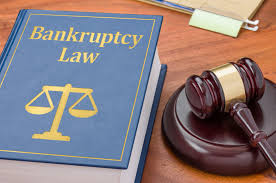Bankruptcy means testing can help you establish if you qualify for chapter 7 bankruptcy, as well as the duration of your payback period & the amount of your chapter 13 monthly installments. Bankruptcy applicants who earn more than the community’s median income must undergo a means test. Means testing is designed to guarantee that bankruptcy applicants make full or partial repayment to their creditors if they can afford to do so.
Applicants who are unable to afford repayment installments are deemed eligible for chapter 7 bankruptcy, which dismisses most debts but may involve the surrender of considerable assets. Individuals who can afford to make some payments to creditors are eligible for chapter 13 bankruptcy, & means testing determines the amount & duration of the payments they will make to repay their creditors. It is worth nothing that testing may also be applicable to chapter 11, 12 bankruptcy, which is identical to chapter 13 but only for farmers & fishermen. Let’s look at chapters 7 & 13, the bankruptcy options most commonly employed by individuals & couples. Here’s what you should know.
How does Bankruptcy Means Testing Work?
A bankruptcy test is a part of the federal bankruptcy procedure that determines your capacity to pay for basic essentials including food, clothing, transportation, and health care in your neighborhood. To do so, it analyzes your monthly income and expenses to what a typical household your size would spend on those goods. When submitting a means test, you must search up the median expenditures in your community and enter them into the means-testing worksheet, along with information about your actual expenses. Federal government agencies provide online information on your community’s median income and expenses.
Means Test in Chapter 7 Bankruptcy
All chapter 7 filers must complete the form 122A-1, a monthly income statement that includes all sources of income for you in the six months before your bankruptcy filing. To calculate a monthly average, add all revenue for the previous six months & divide by six, according to the worksheet instructions. If that average is less than your state’s median income for a household of your size, your Chapter 7 case can move forward & if your income exceeds the community median, you face a presumption of abuse & must rebut it in order for Chapter 7 to proceed.
Means Test in Chapter 13 Bankruptcy
If you are applying for Chapter 13 bankruptcy, you must fill out the form 122C1. This form is used to describe the average monthly income you earned in the six months leading up to your bankruptcy filing. You must submit proof of income to the median for a household of your size in your community, using federal government data that you have obtained & if your salary is equal to or less than the median income in your town, you do not need to fill out any additional documents, & the commitment term is 3 years. Or if your income exceeds the median than you have to fill the form 122C-B. this form basically calculates how much money you have in excess of what is required to cover daily expenses that can be utilized to repay your creditors. It also sets the monthly payment you would be expected to make throughout a 5-year commitment period.
Bottom Line
Means testing can be complicated, & completing paperwork with errors might have substantial implications. If you are subject to a means test, you should consult with a Bankruptcy Attorney In Somerville, NJ to learn more about the implications.


